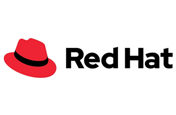Unable to find what you're searching for?
We're here to help you find itDO281 Red Hat OpenShift Administration II: Configuring a Production Cluster with Exam Course Overview
Configure and manage OpenShift clusters to maintain security and reliability across multiple applications and development teams.
Red Hat OpenShift Administration II: Operating a Production Kubernetes Cluster with exam (DO281) prepares OpenShift Cluster Administrators to perform daily administration tasks on clusters that host applications provided by internal teams and external vendors, enable self-service for cluster users with different roles, and deploy applications that require special permissions such as such as CI/CD tooling, performance monitoring, and security scanners. This course focuses on configuring multi-tenancy and security features of OpenShift as well as managing OpenShift add-ons based on operators.
The skills you learn in this course can be applied using all versions of OpenShift, including Red Hat OpenShift on AWS (ROSA), Azure Red Hat OpenShift, and OpenShift Container Platform.


Purchase This Course
USD
View Fees Breakdown
| Flexi Video | 16,449 |
| Official E-coursebook | |
| Exam Voucher (optional) | |
| Hands-On-Labs2 | 4,159 |
| + GST 18% | 4,259 |
|
Total Fees (without exam & Labs) |
22,359 (INR) |
|
Total Fees (with Labs) |
28,359 (INR) |
Select Time
Select Date
| Day | Time |
|---|---|
|
to
|
to |
♱ Excluding VAT/GST
You can request classroom training in any city on any date by Requesting More Information
Inclusions in Koenig's Learning Stack may vary as per policies of OEMs
Koenig Learning Stack
 Free Pre-requisite Training
Free Pre-requisite TrainingJoin a free session to assess your readiness for the course. This session will help you understand the course structure and evaluate your current knowledge level to start with confidence.
 Assessments (Qubits)
Assessments (Qubits)Take assessments to measure your progress clearly. Koenig's Qubits assessments identify your strengths and areas for improvement, helping you focus effectively on your learning goals.
 Post Training Reports
Post Training ReportsReceive comprehensive post-training reports summarizing your performance. These reports offer clear feedback and recommendations to help you confidently take the next steps in your learning journey.
 Class Recordings
Class RecordingsGet access to class recordings anytime. These recordings let you revisit key concepts and ensure you never miss important details, supporting your learning even after class ends.
 Free Lab Extensions
Free Lab ExtensionsExtend your lab time at no extra cost. With free lab extensions, you get additional practice to sharpen your skills, ensuring thorough understanding and mastery of practical tasks.
 Free Revision Classes
Free Revision Classes Join our free revision classes to reinforce your learning. These classes revisit important topics, clarify doubts, and help solidify your understanding for better training outcomes.
Inclusions in Koenig's Learning Stack may vary as per policies of OEMs
Scroll to view more course dates
♱ Excluding VAT/GST
You can request classroom training in any city on any date by Requesting More Information
Inclusions in Koenig's Learning Stack may vary as per policies of OEMs

The minimum required prerequisites for successfully undertaking the DO281 Red Hat OpenShift Administration II: Configuring a Production Cluster with Exam course are as follows:
These prerequisites ensure that students have the essential skills and understanding to effectively engage with the course material and succeed in configuring and managing OpenShift clusters.
Brief Introduction:
The DO281 Red Hat OpenShift Administration II course prepares administrators to efficiently manage, secure, and scale OpenShift clusters in production environments.
Job Roles and Audience:
The DO281 Red Hat OpenShift Administration II: Configuring a Production Cluster with Exam course equips administrators with the skills to configure, manage, and secure OpenShift clusters, ensuring reliable operation across various development teams and applications.
Suggestion submitted successfully.
 Free Pre-requisite Training
Free Pre-requisite TrainingJoin a free session to assess your readiness for the course. This session will help you understand the course structure and evaluate your current knowledge level to start with confidence.
 Assessments (Qubits)
Assessments (Qubits)Take assessments to measure your progress clearly. Koenig's Qubits assessments identify your strengths and areas for improvement, helping you focus effectively on your learning goals.
 Post Training Reports
Post Training ReportsReceive comprehensive post-training reports summarizing your performance. These reports offer clear feedback and recommendations to help you confidently take the next steps in your learning journey.
 Class Recordings
Class RecordingsGet access to class recordings anytime. These recordings let you revisit key concepts and ensure you never miss important details, supporting your learning even after class ends.
 Free Lab Extensions
Free Lab ExtensionsExtend your lab time at no extra cost. With free lab extensions, you get additional practice to sharpen your skills, ensuring thorough understanding and mastery of practical tasks.
 Free Revision Classes
Free Revision Classes Join our free revision classes to reinforce your learning. These classes revisit important topics, clarify doubts, and help solidify your understanding for better training outcomes.
Inclusions in Koenig's Learning Stack may vary as per policies of OEMs





